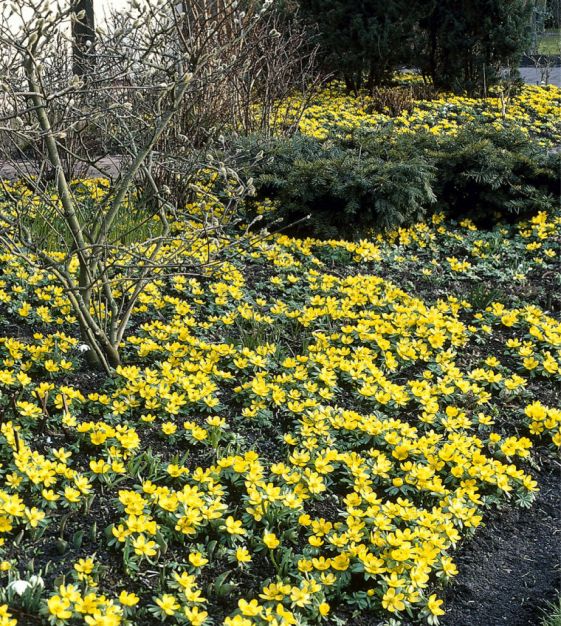-
- 20%-Off Website Specials
- New for 2024!
- Tulips
- Narcissi
- Allium
- Anemone blanda
- Brodiaea
- Camassia
- Chionodoxa
- Corydalis
- Crocus
- Eranthis
- Eremurus
- Erythronium
- Fritillaria
- Galanthus
- Geranium
- Gladiolus
- Hyacinths
- Hyacinthoides
- Ipheion uniflorum
- Dutch Iris
- Rock Garden Iris
- Ixiolirion
- Leucojum Aestivum
- Muscari
- Ornithogalum
- Oxalis
- Puschkinia
- Scilla
- Lilies
- Peonies
- Tender Bulbs
- Anemone Giants
- Tecolote Ranunculus
- Freesias
- Paperwhites
- Amaryllis
Eranthis cilicica
New! This year, we are carrying Eranthis cilicica because the grower of Eranthis hyemalis, our longtime offering, is rebuilding his planting stock for the future. It is virtually identical.
Eranthis cilicica naturalizes by both bulb offsets and, over time, seed. Not a bulb, Eranthis cilicica is a wizened, irregularly shaped, small dark tuber.
Dating back to 1892, this naturalizing heirloom was often used in centuries-old stinzenplanten lawn plantings in the Netherlands. (These classic lawn plantings might also include Chionodoxa, Corydalis solida, Crocus, Fritillaria meleagris, Galanthus, Hyacinthoides non-scripta, Iris reticulata, Leucojum aestivum, Narcissus Pheasant’s Eye, Puschkinia, Scilla and Tulipa sylvestris.)
Deer- and rodent-resistant, Eranthis is best grown in moist, humus-rich, neutral pH, well-draining soil in full sun to partial sunlight. It can handle, and may even prefer, soil that has a bit more moisture in the winter and spring, but never in a spot that gets waterlogged at any time. It is a good forcer. Bulb size: 3.5 to 4 cm. Full to partial sunlight. Bloom time in horticultural zone 5: March/April. Plant 4" deep and 4" apart. HZ: 5-8. Height: 4".
Eranthis are The Art & Soul of Spring.
Eranthis Horticultural Tips Stinze Plantings





